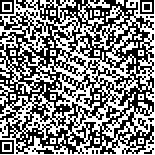| 摘要: |
| 采用持续投喂(对照组C)和周期性饥饿1d再投喂5d(S1F5)、周期性饥饿2d再投喂4d(S2F4)、周期性饥饿3d再投喂3d(S3F3)4种投喂策略,研究了周期性饥饿再投喂对曼氏无针乌贼(Sepiella japonica)幼体(10.16±0.25g)的生长、体组成、氨基酸和脂肪酸的影响。结果表明:S3F3处理组中体重增重率、胴体长增长率及成活率三个指标均分别显著低于对照组C(P<0.05),而S1F5和S2F4处理组三个指标均与对照组C差异不显著(P>0.05)。另外,随着周期性饥饿时间的延长,体组成水分含量呈显著上升趋势(P<0.05),而粗蛋白和粗脂肪含量均呈显著下降趋势(P<0.05),灰分含量变化不显著(P>0.05)。三个处理组中氨基酸总量(T)、必需氨基酸总量(E)均与对照组C差异不显著(P>0.05);EPA、DPA和DHA含量均与对照组C差异不显著(P>0.05)。综合上述结果表明,S1F5和S2F4组的曼氏无针乌贼幼体均出现了完全补偿生长,并且对其营养组成没有影响,建议曼氏无针乌贼幼体的最佳投喂模式为周期性饥饿2d再投喂4d。 |
| 关键词: 曼氏无针乌贼幼体 饥饿再投喂 生长 体组成 氨基酸 脂肪酸 |
| DOI:10.11693/hyhz20160900202 |
| 分类号: |
| 基金项目:2015年浙江省科技计划项目,2015F50055号;2015年浙江省海洋与渔业局项目(乌贼和大黄鱼放流亲体种质复壮及扩繁);2016年浙江省科技计划项目,2016F50041号;国家星火计划项目,2015GA700014号。 |
附件 |
|
| THE EFFECTS OF THE CYCLIC STARVATION-REFEEDING ON GROWTH, BODY COMPOSITION, AMINO ACIDS AND FATTY ACIDS OF JUVENILE SEPIELLA JAPONICA |
|
ZHANG Tao, PING Hong-Ling, SHI Hui-Lai, YU Fang-Ping, MENG Hao, LIN Cheng
|
|
Marine Fisheries Research institute of Zhejiang, Zhejiang Province Key Lab of Mariculture and Enhancement, Zhoushan 316021, China
|
| Abstract: |
| This experiment was conducted to investigate the effect of repetitive "starvation-refeeding" on growth, body composition, amino acids and fatty acids of juvenile Sepiella japonica with initial weight of (10.16±0.25g). The test groups were subjected to 3 different repetitive cycles of starvation-refeeding (S1F5, S2F4, S3F3). while the control group C were treated with continuous feeding, "S" and "F" implying starvation days and refeeding days respectively. The results showed that the weight gain ratio, body length gain ratio and survival ratio of S3F3 were significantly lower than C (P<0.05), while the three indicators were no significant difference between S1F5, S2F4 and C (P>0.05). The moisture was found a significant rising trend with the prolongation of periodic starvation days (P<0.05), however, the crude protein and crude lipid assumed a significant downward trend (P<0.05), and no significant variation was observed in ash among all groups (P>0.05). No significant difference was observed in total amino acid and essential amino acid between three test groups and C (P>0.05), and the same results were found in the EPA, DPA and DHA (P>0.05). In this study, full compensation for the growth capacity was observed in the juvenile S. japonica of S1F5 and S2F4 without influencing on nutrition composition, which suggested that the best feeding mode of juvenile S. japonica was the cycle starvation 2 days and refeeding 4 days. |
| Key words: juvenile Sepiella japonica starvation-refeeding growth body composition amino acids fatty acids |
